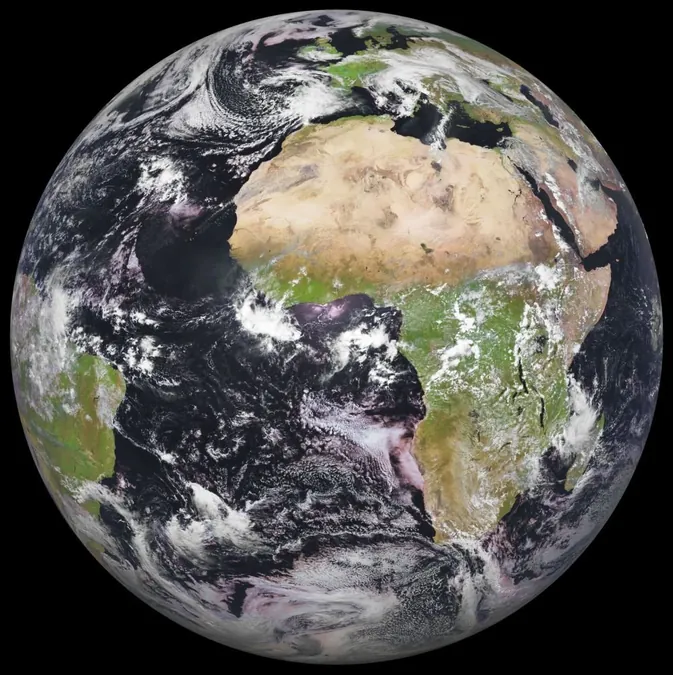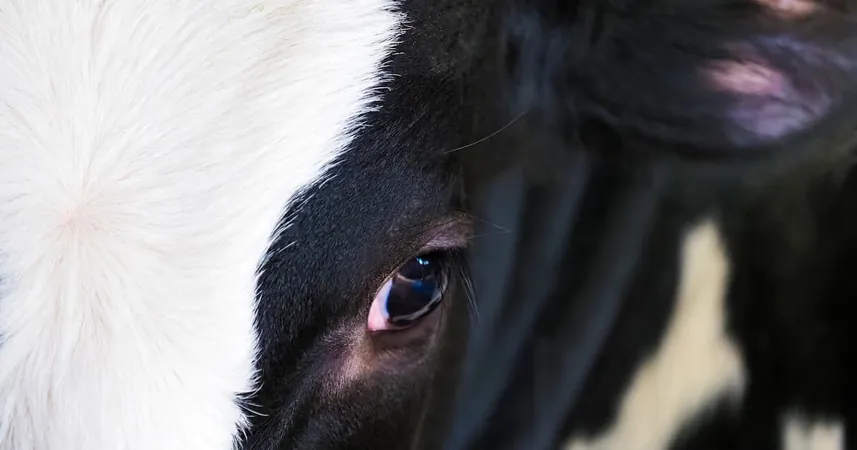
Revolutionizing Climate Monitoring: How Telescope Noise Could Transform Our Understanding of Greenhouse Gases
2025-08-11
Author: Mei
Harnessing Telescope Technology for a Greener Future
Forget what you know about traditional climate monitoring! Ground-based telescopes, typically used to explore the cosmos, are now on the front lines of tracking greenhouse gases (GHGs) in our atmosphere. Researchers at the University of Warwick, in collaboration with Spanish institutions, are unveiling an innovative method to utilize the noise generated by starlight observations to measure GHG levels. This groundbreaking research could change everything!
The Challenge: Earth’s Carbon Conundrum
Earth is drowning in carbon, and monitoring this increase is crucial to understanding climate change. With carbon dioxide levels on the rise, it's essential to find ways to measure its impact on agriculture, droughts, melting ice, and wildfires. Given the multitude of telescopes around the globe, they hold untapped potential for this vital task.
Spectroscopy: The Secret Sauce for Measuring GHGs
Astronomers have long relied on spectroscopy to decipher the atmospheres of distant planets and celestial bodies. Each molecule possesses unique spectroscopic fingerprints, making it possible to determine their presence. However, Earth’s atmospheric conditions introduce telluric lines—noisy distortions that obscure these signals. Enter Marcelo Aron Fetzner Keniger, a PhD student who is flipping the script by using these telluric lines to measure GHGs right here on Earth.
Introducing Astroclimes: A Game-Changer in GHG Measurement
Keniger's brainchild, Astroclimes, can detect crucial atmospheric molecules like methane and carbon dioxide. He explains, “Monitoring GHG levels is essential for measuring their impact on global warming. While solar spectra have traditionally been used for daytime measurements, Astroclimes leverages nighttime observations, providing a much-needed complement to current methodologies.”
A Collaborative Effort Across Borders
This ambitious project saw collaboration between the University of Warwick and the Calar Alto Astronomical Observatory in Spain. Through an observational campaign, the researchers aim to combine nighttime observations with daytime data, delving deeper into Earth's carbon cycle and GHG emissions.
Transforming Data into Actionable Insights
Astroclimes works by creating a model of the telluric transmission spectrum and aligning it with data from stellar observations. This method represents a slight shift in the lens of astronomy, focusing the attention on our planet's atmosphere!
Filling the GHG Observation Gap in Spain
Spain has been lacking a comprehensive system for monitoring GHGs. The COllaborative Carbon Column Observing Network (COCCON) has stepped in to fill this void, planning to establish a network of twelve observation stations across the country. This initiative aims to enhance our understanding of GHG sources and provide vital data for climate change mitigation strategies.
A Low-Carbon Future for Observatories
The Calar Alto Observatory is not just focusing on astrophysics; it's also on a journey toward environmental sustainability. By transitioning to renewable energy sources like solar and biomass, the observatory plans to reduce its carbon footprint significantly. The goal is to become a benchmark for eco-friendly astronomical research, demonstrating that observatories can play a pivotal role in monitoring and protecting our planet.
The Bigger Picture: Astronomy as a Tool for Climate Action
As telescopes lend their eyes to the night sky, they are simultaneously helping to shed light on the challenges of climate change. With initiatives like Astroclimes and COCCON paving the way, we might just be on the brink of a revolutionary leap in our understanding of greenhouse gases—an essential step for a sustainable future.



 Brasil (PT)
Brasil (PT)
 Canada (EN)
Canada (EN)
 Chile (ES)
Chile (ES)
 Česko (CS)
Česko (CS)
 대한민국 (KO)
대한민국 (KO)
 España (ES)
España (ES)
 France (FR)
France (FR)
 Hong Kong (EN)
Hong Kong (EN)
 Italia (IT)
Italia (IT)
 日本 (JA)
日本 (JA)
 Magyarország (HU)
Magyarország (HU)
 Norge (NO)
Norge (NO)
 Polska (PL)
Polska (PL)
 Schweiz (DE)
Schweiz (DE)
 Singapore (EN)
Singapore (EN)
 Sverige (SV)
Sverige (SV)
 Suomi (FI)
Suomi (FI)
 Türkiye (TR)
Türkiye (TR)
 الإمارات العربية المتحدة (AR)
الإمارات العربية المتحدة (AR)